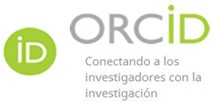The economic impact of the Quintuple Helix ecosystem, from the perspective of the cultural industry at the University of Guadalajara
Keywords:
Triple Helix Model, cultural industries, university cultural center, economic spillAbstract
The Triple Helix concept materialises physical infrastructures of academic, governmental, business and social linkages through the economies of talent and knowledge to detonate regional competitiveness, differentiate capacities and offer better conditions associated with quality of life. The concept of creative economy is understood as a process that triggers innovation, technological change and comparative advantage for the development of related businesses. Its core concept is based on skills and talents with the potential to trigger employment, industrial reproduction and technological change for business development, and creation and dissemination of cultural content. The venues for cultural shows and events of the University Cultural Centre (CCU) of the University of Guadalajara (UdG) are an example of the development of a cultural industry. These venues sold close to 900,000 tickets in 2023, generating direct and indirect income of more than 45 million dollars, including income, food and hotel nights.
Downloads
References
Carayannis, E. G., & Campbell, D. F. (2009). Mode 3 and “Quadruple Helix”: Toward a 21st century fractal innovation ecosystem. International Journal of Technology Managemen, 46, 201-234. https://www.inderscienceonline.com/doi/abs/10.1504/IJTM.2009.023374
Carayannis, E. G., Thorsten, D. B., & Campbell, D. F. (2012). The Quintuple Helix innovation model: global warming as a challenge and driver for innovation. . Innovation and Entrepreneurship, 1(2), 1-12. https://innovation-entrepreneurship.springeropen.com/articles/10.1186/2192-5372-1-2
Celaya, R. (2015). Cono-ciencia. ITSON.
Dunjó, M. J. (2023). Caja Siete en tu negocio. https://www.cajasietecontunegocio.com/temas/recursos-humanos/item/a-proposito-de-innovacion-que-es-el-modelo-de-cuadruple-helice-y-el-quintuple
Etzkowitz, H., Gulbrandsen, M., & Levit, J. (2001). Public Venture Capital. Aspen/Kluver.
Etzkowitz,H., & Leydesdorf, L. (1998). TheTripleHelix a Model for Innovation. Studies. Science & Public Policy, 25(3), 195-203.
Faulker, W. J. (1995). Knowledge frontiers. Public sector research and industrial innovation. Oxford Univesity Press.
Gibbons, J. (1997). La nueva producción del conocimiento. Pomares.
Gobierno del Estado de Jalisco. (2019). Secretaría de Planeación y Finanzas. https://sepaf.jalisco.gob.mx/sites/sepaf.jalisco.gob.mx/files/ped-2013-2033_0.pdf
Goleman, D. (1998). Working with emotional intelligence. Bantam Books.
Lebrún, A. M. (2014). Industria culturales, creativas y de contenido. Consensus, 19(2), 45-57. https://www.unife.edu.pe/vicerrectorado_investigacion/CENTRO_INV/revista/N19_Vol2/Artu00EDculo%203.pdf
Leyva, S. L. (2005). La Vinculación de la ciencia y la tecnología con el sector productivo: una perspectiva económica y social. Universidad Autónoma de Sinaloa.
North, D. O. (1993). Instituciones, cambio institucional y desempeño económico. Fondo de Cultura Económica.
Paredes, M. G. (2023). El rol estratégico de la Universidad en la transferencia de conocimiento Desafíos del Sistema Nacional de Ciencia, Tecnología e Innovación. https://www.researchgate.net/figure/Los-subsistemas-del-modelo-de-la-quintuple-helice_fig1_372742442
Pollstar. (2023). Data cloud. https://www.pollstar.com/data?scrollPosition=data-cloud
Reza, G. (2023). Auditorio Telmex, base económica y política de Raúl Padilla. https://www.auditoriotelmex.com/index.php/jalisco/item/133-auditorio-telmex-base-economica-y-politica-de-raul-padilla
Schartinger, D., Schibany, A., & Gassler, H. (2001). Interactive Relations Between Universities and Firms. Journal of Technology, 26, 255-268. https://link.springer.com/article/10.1023/A:1011110207885
Universidad de Guadalajara. (2019). Plan de Desarrollo Institucional 2030. https://pdi.udg.mx/acerca-de#:~:text=Acerca%20de%20El%20Plan%20de%20Desarrollo%20Institucional%20%28PDI%29,deber%C3%A1%20trabajar%20la%20UdeG%20durante%20la%20presente%20administraci%C3%B3n
Downloads
Published
How to Cite
License
Copyright (c) 2024 Roberto Moreno-Ortiz, Eva Angélica Guerra-Avalos, Viviana Manuela Valadez-Sánchez

This work is licensed under a Creative Commons Attribution-NonCommercial-ShareAlike 4.0 International License.
Authors who publish in Revista UGC agree to the following terms:
1. Copyright
Authors retain unrestricted copyright to their work. Authors grant the journal the right of first publication. To this end, they assign the journal non-exclusive exploitation rights (reproduction, distribution, public communication, and transformation). Authors may enter into additional agreements for the non-exclusive distribution of the version of the work published in the journal, provided that acknowledgment of its initial publication in this journal is given.
© The authors.
2. License
The articles are published in the journal under the Creative Commons Attribution-NonCommercial-ShareAlike 4.0 International License (CC BY-NC-SA 4.0). The terms can be found at: https://creativecommons.org/licenses/by-nc-sa/4.0/deed.en
This license allows:
- Sharing: Copying and redistributing the material in any medium or format.
- Adapting: Remixing, transforming, and building upon the material.
Under the following terms:
- Attribution: You must give appropriate credit, provide a link to the license, and indicate if any changes were made. You may do this in any reasonable manner, but not in any way that suggests the licensor endorses or sponsors your use.
- NonCommercial: You may not use the material for commercial purposes.
- ShareAlike: If you remix, transform, or build upon the material, you must distribute your creation under the same license as the original work.
There are no additional restrictions. You may not apply legal terms or technological measures that legally restrict others from doing anything the license permits.







